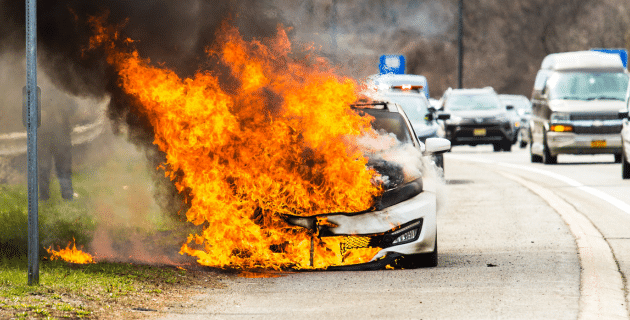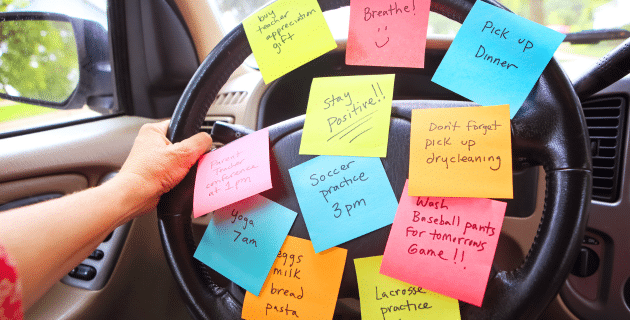
by California Casualty | Educators, Firefighters, Nurses, Peace Officers |
It’s time to stop and reflect on the good that is around us. Starting each day with an inspiring message of gratitude not only sets the tone for positivity, it also benefits you in numerous ways. Being thankful increases feelings of happiness and optimism. Gratitude fosters positive self-esteem and improves relationships. It helps to reduce stress.
Embrace the power of gratitude with these inspiring quotes.
- “There are always flowers for those who want to see them.” – Henri Matisse
- “If you want to find happiness, find gratitude.” – Steve Maraboli
- “Enjoy the little things for one day you may look back and realize they were the big things.” – Robert Brault
- “Some people are always grumbling because roses have thorns; I am thankful that thorns have roses.” – Alphonse Karr
- “Gratitude can transform common days into thanksgivings, turn routine jobs into joy, and change ordinary opportunities into blessings.” – William Arthur Ward
- “Let us be grateful to people who make us happy; they are the charming gardeners who make our souls blossom.” – Marcel Proust
- “Gratitude turns what we have into enough.” – Aesop
- “The more grateful I am, the more beauty I see.” – Special Olympics CEO Mary Davis
- “An attitude of gratitude brings great things.” – Yogi Bhajan
- “The single greatest thing you can do to change your life today would be to start being grateful for what you have right now.” – Oprah Winfrey
- “Remember that what you now have was once among the things that you had hoped for.” – Epicurus
- “Sometimes we should express our gratitude for the small and simple things like the scent of the rain, the taste of your favorite food, or the sound of a loved one’s voice.” – Joseph B. Wirthlin
- “This is a wonderful day. I have never seen this one before.” – Maya Angelou
- “We must find time to stop and thank the people who make a difference in our lives.” – John F. Kennedy
- “We often take for granted the very things that most deserve our gratitude.” – Cynthia Ozick
- “Learn to be thankful for what you already have, while you pursue all that you want.” – Jim Rohn
- “Gratitude sweetens even the smallest moments.” – Anonymous
- “All that we behold is full of blessings.” – William Wordsworth
- “Among the things you can give and still keep are your word, a smile, and a grateful heart.” – Zig Ziglar
- “The more you are thankful, the more you attract things to be thankful for.” – Walt Whitman
This article is furnished by California Casualty, providing auto and home insurance to educators, law enforcement officers, firefighters, and nurses. Get a quote at 1.866.704.8614 or www.calcas.com.

by California Casualty | Auto Insurance Info, Safety |
Are you more likely to encounter a vehicle fire in an electric vehicle or a gas-powered one? The answer may surprise you. We’re breaking down the risks of each, and sharing important tips to help keep you safe from a car fire no matter which type of vehicle you drive.
Fires happen in all types of vehicles.
Despite articles circulating on the Internet, there is no government agency tracking fires by the type of vehicle. So, we don’t have a clear idea of which type of vehicle is more prone to fires: gas, electric or hybrid. You’re more likely to see a fire in a gasoline-powered engine than an EV or hybrid, simply because there are more of those vehicles on the road.
We do know that less than half of one percent (or 0.04) vehicles catch fire in any given year. Even though that seems like a low percentage, consider that there were more than 200,000 vehicle fires in the U.S. in 2018, as reported by the National Fire Protection Association (NFPA).
What causes vehicle fires?
Engines produce heat, and when heat connects with a spark or a flammable liquid, a fire can start. Here’s a quick overview of how fires typically happen in gas versus electric vehicles.
Gas-powered combustion vehicles
- Fuel system leaks are the most common causes of fires in gas-powered vehicles. Gasoline is highly flammable and can catch fire from a single spark. Gasoline at a high enough temperature can ignite by itself.
- Electrical system failures are the second most common cause of gas-powered car fires. The electric current produced by a standard lead-acid battery, along with faulty or loose wiring, can produce sparks. Those sparks can ignite a fluid leak or hydrogen gas buildup.
- Flammable fluids can cause fires if their lines, hoses, or containers are damaged. These fluids circulate through your gas-powered engine, and include oil, transmission fluid, power steering fluid, brake fluid, engine coolant and gasoline or diesel. An overheated engine can sometimes cause these fluids to seep out of their designated areas. The anti-lock brake system also can leak brake fluid that can cause an electric short, which can lead to a fire.
- Exhaust-related fires can come from catalytic converters. These parts can be so hot that they can ignite grass under your vehicle. Catalytic converter fires usually occur if your car’s engine doesn’t burn fuel properly, and extra stuff winds up in the exhaust. That causes your catalytic converter to work too hard to burn off those extra pollutants.
- Crashes can cause fires, even though most vehicles are designed with crumple zones that protect the engine, battery, and gas tank. Even so, a crash can cause fluid to leak, and create heat and smoke, which are the ideal conditions for a fire.
Electric vehicles
- Batteries can cause fires in electric and hybrid vehicles. This can happen if the battery is overcharged, damaged, or has a faulty design. The battery is short-circuited, causing a chemical reaction that results in flammable, poisonous gases. This can even happen when a car is not being driven.
- Crashes can damage the battery. If the coolant surrounding the battery leaks out, it can quickly heat up and cause a fire. A crash can also compromise the battery so that it short circuits and heats up. Manufacturers have included safety features such as automatic shutoffs for batteries during a crash, and coatings that help fire from spreading.
EV Car Fires: Much Tougher to Control
Lithium-ion batteries provide their own fuel source, and as a result, can burn for hours on end. They are sometimes hotter than gasoline-powered fires, and therefore harder to cool down. If you call 9-1-1 for a car fire involving an electric or hybrid vehicle, make sure you mention that fact. There are specialized fire extinguishers and firefighting techniques for electrical fires.
Signs Your Car May be in Danger of Catching Fire
Older vehicles may have wiring or other issues that can lead to a fire. However, any car could be at risk. If your vehicle exhibits any of the following signs, take it to your mechanic immediately.
- Quick drops in fuel levels or oil levels
- Wide ranges and changes in your engine’s temperature
- Fuses that repeatedly that pop
- A smoky or burning smell
- Smoke or sparks
- Fluid leaking under your car
What to Do if Your Car Catches Fire
Here’s what to do if your car catches fire.
- Pull over safely as soon as you can.
- Turn the engine off.
- Get everyone out of the car and at least 100 feet away.
- Call 9-1-1.
- Don’t go back into the vehicle for any reason.
- Don’t open the hood. A burning car can explode at any moment.
Your car is one of your greatest investments. Keep your car well maintained and protect it with the right insurance. Safe travels.
This article is furnished by California Casualty, providing auto and home insurance to educators, law enforcement officers, firefighters, and nurses. Get a quote at 1.866.704.8614 or www.calcas.com.

by California Casualty | Auto Insurance Info, Safety |
When your son or daughter starts driving, it’s a milestone moment. It can also be a little nerve wracking. You can’t be everywhere to keep them safe, but you can help them by choosing the right vehicle. In honor of Teen Driver Safety Week, we researched the best and safest cars for teens in 2023, according to the Insurance Institute for Highway Safety (IIHS) and Consumer Reports.
What makes a good vehicle for teens?
You want a car with strong reliability ratings and excellent crash test scores. Today’s cars also have hi-tech safety features that can help keep young drivers safe. These include:
- Blind spot monitoring to let you know if there is a vehicle in your blind spot.
- Automatic emergency braking when the car senses a potential collision.
- A lane departure warning that makes a sound or other signal if you veer toward the next lane.
- A lane-keeping assist that steers your vehicle back into your lane.
- Pedestrian detection that identifies people walking in front of the car.
- Built-in systems with teen driver controls, such as speed warnings and muting of audio while driving.
You will want to avoid:
- Sports cars, which have too much horsepower and could tempt a teen to drive beyond their skill level.
- Small cars that weigh under 2,750 pounds; their crumple zones are not good.
- Large vehicles with long braking distances.
- Vehicles with seats for lots of passengers. Each additional passenger increases the odds of an accident due to distractions.
Following is the list of vehicles with above average reliability scores and good crash tests. Prices provided are from Kelley Blue Book and are estimates for the lowest trim models as of May 2023.
New Cars
Small Cars
| Mazda 3 sedan or hatchback |
$23,000 |
Midsize Cars
| Subaru Legacy |
$25,100 |
| Subaru Outback |
$29,300 |
Small SUVs
| Honda HR-V |
$24,400 |
| Subaru Forester |
$27,700 |
| Mazda CX-5 |
$27,800 |
| Mazda CX-50 |
$28,900 |
| Toyota RAV4 |
$29,300 |
| Honda CR-V |
$29,700 |
| Lexus UX |
$36,000 |
Midsize SUVs
| Subaru Ascent |
$34,600 |
| Hyundai Palisade |
$36,600 |
| Toyota Highlander |
$37,100 |
| Mazda CX-9 |
$38,300 |
| Lexus NX |
$39,800 |
Minivan
Best Choices for Used Cars
Small Cars
| Mazda 3 sedan or hatchback |
2014-20; built after October 2013 |
$9,100 |
| Ford C-Max Hybrid |
2014-16 |
$10,000 |
| Toyota Prius |
2014; built after November 2013 |
$12,900 |
| Subaru Impreza sedan or wagon |
2018, 2022 |
$14,500 |
Midsize Cars
| Subaru Legacy |
2013-21; built after August 2012 |
$7,800 |
| Mazda 6 |
2014-18 |
$10,200 |
| Subaru Outback |
2015-18, 2022 |
$12,200 |
| Toyota Prius v |
2015-17 |
$14,500 |
| Volkswagen Passat |
2017 |
$14,500 |
| BMW 3 series |
2017 or newer; built after November 2016 |
$16,500 |
Large Cars
| Toyota Avalon |
2015 or newer |
$14,600 |
| Hyundai Genesis |
2016 |
$18,000 |
Small SUVs
| Volvo XC60 |
2013, 2017 |
$9,600 |
| Mazda CX-5 |
2014 or newer; built after October 2013 |
$11,800 |
| Mazda CX-3 |
2016, 2019 |
$13,900 |
| Honda CR-V |
2015 or newer |
$15,200 |
| Honda HR-V |
2017 or newer; built after March 2017 |
$16,000 |
| Toyota RAV 4 |
2015 or newer; built after November 2014 |
$16,100 |
| Kia Niro Plug-in Hybrid |
2018 |
$18,900 |
| Subaru Forester |
2018 or newer |
$20,000 |
Midsize SUVs
| Nissan Murano |
2015 or newer |
$12,400 |
| Hyundai Santa Fe Sport |
2018 |
$15,700 |
| Toyota Highlander |
2014 or newer |
$17.100 |
| Acura RDX |
2016 or newer |
$19,300 |
Minivan
| Toyota Sienna |
2015-20 |
$15,700 |
Pickup
| Toyota Tacoma extended car or crew cab |
2016 or newer |
$17,900 |
Remember, when looking at vehicles, talk to your insurance agent to see what will save you the most with your teen on your policy. And don’t forget to look out for recalls or damage from previous owners.
Finally, here are some other ways that you can help your teen stay safe.
- Sign them up for driver’s ed or safety classes.
- Make sure they get experience driving in all kinds of conditions.
- Teach them what to do in emergencies.
- Talk to them about how dangerous it is to drive while distracted.
- Make sure they are fully insured for peace of mind.
This article is furnished by California Casualty, providing auto and home insurance to educators, law enforcement officers, firefighters, and nurses. Get a quote at 1.866.704.8614 or www.calcas.com.

by California Casualty | Auto Insurance Info, Safety, Travel |
Some days it seems we’re practically living in our cars. Having the right things on hand can make our lives that much easier.
As you’re going from soccer practice to dance and back again, make sure you have the kid-friendly “must-haves” in your vehicle. In honor of Child Passenger Safety Week, we’ve also included some important items to keep everyone safe.
Essentials
Stock the basic travel items to keep everyone clean and comfortable.
- Wipes: These include wet wipes to clean hands and faces as well as disinfecting wipes for surfaces such as car seats. Up your game with stain remover wipes for those “oops” moments.
- Tissues: Travel packs are easy to store. Not only are they good for the sniffles, but they can also double as napkins after eating, or toilet paper if you’re in a bathroom that has run out.
- A towel: Dry off, clean off, or use to cover a hot seat. Towels can even double as a blanket or a napkin in a pinch.
- Scissors: These are helpful in case you need to cut a seatbelt in an emergency. In non-emergency situations, use them to cut open items that won’t easily tear.
Pro Tip: Use a laundry basket for the things going from the car into the house and back again. It’s especially useful for sports equipment.
Clothing
Keep some extra things for everyone in your family.
- Ponchos and/or umbrellas: You’ll want these for when you’re caught in the rain. You can find inexpensive disposable ponchos that do the trick.
- Extra pair of clothes: Include a change of clothes with underwear, and a plastic bag for dirty or wet things.
- Flip flops: It’s easier storing these than shoes for those times when your child splashes in muddy puddles. They’re more forgiving in size and you buy them on clearance.
- Coats, sweatshirts, and blankets: These are great when the air conditioning is blasting, or the weather turns colder unexpectedly.
Snacks and Water
Sometimes plans change, or things take longer than you expected. This way, you’ll avoid the question, “can we stop somewhere for dinner?”
- Snacks: Stock child-friendly snacks and update even nonperishable ones regularly.
- Self-serve containers: Invest in spill-proof cups and containers that enable toddlers and young children to serve themselves.
- Water: Choose reusable bottles, filled with fresh water to keep everyone hydrated. Water is also helpful when someone has sticky hands or sandy/dirty feet.
- Trash bag: You want a place where the kids can throw their trash. Disposable plastic or paper bags are good options. Make sure to empty them often.
Entertainment
Keep them occupied with their favorite activities so that you can stay focused on the road.
- Shoe box of toys: Let them decorate a shoe box and choose their favorite toys for the car. Include crayons and add some coloring books to your bag of books, below.
- Reading: Pack a bag of books for every age level. Consider audio books for longer trips.
- Power converter: Charge everything from phones to kids’ tablets to portable DVD players.
- Restaurant backpack: Stopping to eat? Fill a backpack with toys and activities for kids to use at the restaurant.
Safety
We recognize Child Passenger Safety Week each September. It’s a reminder to keep safety in mind when we’re on the road.
- LifeVac anti-choking device: Enjoying snacks in the car? This rescue suction device can save a life in a choking emergency.
- Safewise seat alarm: This device detects when you open a back door before starting the engine. It sounds a chime, then issues escalating reminders so that you won’t accidentally leave a child behind in a hot car.
- First aid kit: From band aids to antibiotic ointments, chances are you’re going to have to take care of minor injuries on the road. Make sure your first aid kit is fully stocked with the items you need. Include a first aid manual for those situations where you’re not exactly sure what to do.
- Emergency roadside kit: Make sure you’re fully prepared in case you get stuck or stranded. Flares, flashlights, and jumper cables are good things to have in your emergency car kit.
Teach your children safety in and around vehicles for added protection. Finally, protect your car with the right insurance. It will give you peace of mind as you take care of your most precious cargo—your children. Safe travels.
This article is furnished by California Casualty, providing auto and home insurance to educators, law enforcement officers, firefighters, and nurses. Get a quote at 1.866.704.8614.

by California Casualty | Educators, Firefighters, Health, Nurses, Peace Officers |
Before we know it, we’ll be going from relaxing summer days to busy fall schedules. With school, sports practices, extracurricular activities, meetings, and more, it can easily become overwhelming.
We’ve researched some effective ways to take control of our busy schedules. Follow these tips and, hopefully, you’ll find some much-needed time for yourself, too.
Stay on top of the little things so they don’t create last minute rushes.
Stop for gas before the tank is nearly empty. Do your laundry so you don’t have to search for that clean shirt. Go food shopping so you have items to pack for lunch. If you put off the small things, they can become big stressors and throw off your schedule.
Use the one-minute rule. If a task will take you one minute or less, do it now.
Hang up your coat. Put your dishes in the dishwasher. Put away all the groceries when you bring them home, even the ones that don’t need refrigeration. Putting off these smaller tasks will just add to your to-do list.
Make large tasks more manageable by doing them in stages.
If you have a big project at work, you probably break it down into smaller parts. Do the same with your household tasks. Clean the bathroom on Monday, the toilet on Tuesday, and so on. Break up larger projects so that it’s easier to fit them into your schedule.
Make sure everything in your house has a home.
You have five minutes before you must leave, and you can’t find your keys. When you declutter, it’s a lot easier to find the things you need at a moment’s notice. Do that not only for your house but for your car and workspace too.
Schedule tasks for the time that you are most productive.
Are you an early morning person or a night owl? Plan tasks for the times that you have the most energy or can focus the best. You’ll be amazed at how much you can accomplish.
Plan for downtime as you wait for pickups or in lines.
Use waiting time for answering emails, reading brief articles, or doing other tasks that take 10-15 minutes. Prepare a list of smaller tasks that you can complete during this time. Some downtime, however, such as sitting in traffic is not right for multitasking. Don’t text and drive, even if your car is not moving.
Create a to-do list with time estimates.
Don’t rely on your memory. Prepare a daily to-do list. Include an estimate of the time each task will take. Star or highlight the tasks that take priority. Then make an informed decision about which tasks you’ll tackle first. Keep your to-do list in sight where you can easily see it.
Pro Tip: Plan the next day’s to-do list at the end of the previous day so you’ll be ready to go.
Reflect and reprioritize.
New tasks pop up all the time. Take a moment midday to reflect on your to-do list. See where you are and what you have yet to do. Update your priorities to tackle the most important tasks.
Create a master calendar for a visual representation of your schedule.
While a to-do list helps with tasks, a calendar displays your daily, weekly, and monthly commitments at-a-glance. Block out activities on your calendar. Color code your calendar by work/personal/family/child. Allow for travel time and make sure to include breaks/downtime.
Set aside different days of the week for different tasks.
Maybe Saturday is for errands. Sunday is for meal prep. Organizing your schedule in this way helps consolidate the same types of tasks. That way, you’re not running to the food store three times a week for groceries. It will end up being a big timesaver.
Reduce time in meetings.
Consider whether a meeting needs to be in person, or if it could be virtual (no travel time). Maybe it could be a call or email. If you do have the meeting, share the agenda in advance. Include times for topics and stick to the schedule.
Avoid distractions from tasks at hand.
Texts and emails can interrupt your workday and family time. Put your phone on silent or wear headphones. Wait until your break to check your phone. Considering checking email at a designated time (e.g., every hour or every couple of hours) rather than all the time.
Don’t be afraid to delegate.
You don’t have to do everything. Don’t accept more responsibility than you can realistically handle. See if there is someone at work or in your family who can take over some of your workload. Consider paying a professional to handle some of your tasks. There are services that handle errands, housekeeping, meal prep, and more.
Use digital tools.
There are many technology tools that can help you organize from calendar apps to digital to-do lists. Some popular tools include ClickUp, Google Tasks, Notion, RescueTime, and Todoist.
Schedule time for yourself.
You do everything for everyone. Make sure you make time to relax and recharge. Block off time for lunch. Schedule time for self-care, including favorite hobbies, time with friends, and time away. You’ll emerge refreshed and ready to take on a new day.
This article is furnished by California Casualty, providing auto and home insurance to educators, law enforcement officers, firefighters, and nurses. Get a quote at 1.866.704.8614 or www.calcas.com.





